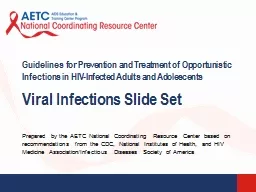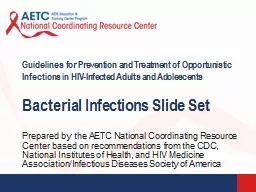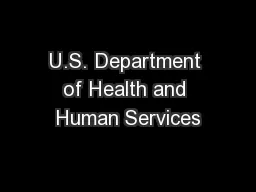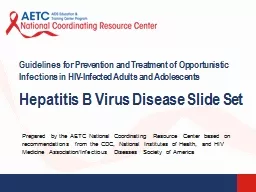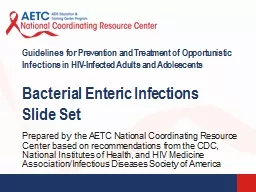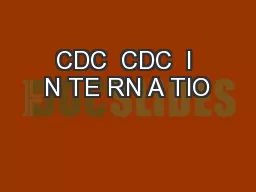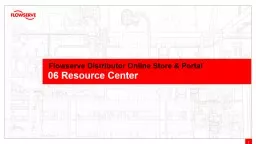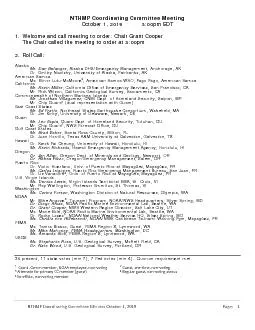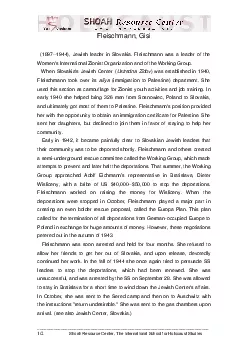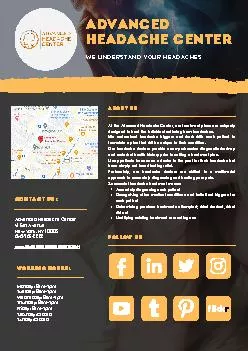PPT-Prepared by the AETC National Coordinating Resource Center based on recommendations from
Author : debby-jeon | Published Date : 2018-10-29
Guidelines for Prevention and Treatment of Opportunistic Infections in HIVInfected Adults and Adolescents Viral Infections Slide Set 2 May 2015 wwwaidsetcorg These
Presentation Embed Code
Download Presentation
Download Presentation The PPT/PDF document "Prepared by the AETC National Coordinati..." is the property of its rightful owner. Permission is granted to download and print the materials on this website for personal, non-commercial use only, and to display it on your personal computer provided you do not modify the materials and that you retain all copyright notices contained in the materials. By downloading content from our website, you accept the terms of this agreement.
Prepared by the AETC National Coordinating Resource Center based on recommendations from: Transcript
Download Rules Of Document
"Prepared by the AETC National Coordinating Resource Center based on recommendations from"The content belongs to its owner. You may download and print it for personal use, without modification, and keep all copyright notices. By downloading, you agree to these terms.
Related Documents

